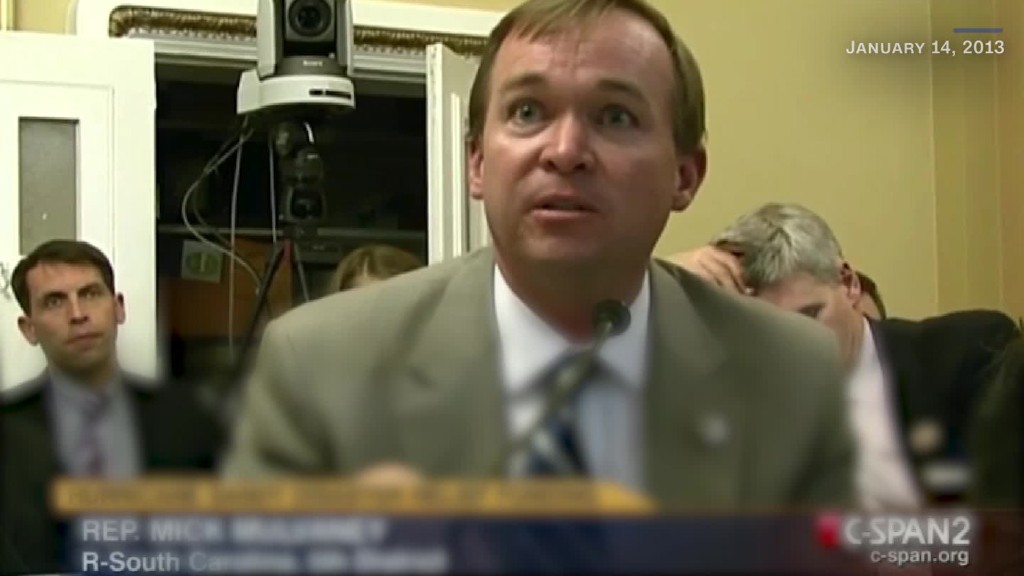
President Donald Trump introduced his 2019 budget blueprint on Monday. He makes some pretty unrealistic claims about how his current proposals would reduce deficits.
His budget proposes to slash them by more than $3 trillion over the next decade, bringing the annual deficit down from 4.4% of GDP this year to 1.1% by 2028.
How? Largely by proposing severe spending cuts combined with optimistic growth projections of roughly 3% a year.
Never mind that he recently signed into law two deficit-increasing bills. The federal tax overhaul plus a two-year increase in spending caps will push the country to start running $1 trillion-plus annual deficits next year.
"The depth of the budgetary hole that has been dug over the past year is made clear by the fact that the administration could not produce a balanced budget even with unrealistic growth assumptions and scoring gimmicks," said Robert L. Bixby, executive director of The Concord Coalition, a nonpartisan fiscal watchdog.
Related: Trump unveils his infrastructure plan
Trump wants to cut more than $1 trillion over 10 years in non-defense discretionary spending — which funds everything from education programs, food stamps, foreign aid, public broadcasting and national parks. That would be achieved by lowering the annual cap on such spending from $544 billion this year to $385 billion in 2028.
But that kind of cut isn't likely to happen.
Under the new budget deal Trump signed, spending on nondefense programs is slated to rise to $662 billion by the end of the decade, according to tables from the White House budget office.
"[The president's budget] assumes an ultimate cut in non-defense discretionary spending by 40% when we just hiked it by over 10%," the nonpartisan Committee for a Responsible Federal Budget noted.
Related: Trump administration wants to slash funding for diplomacy
What's more, spending on non-defense domestic programs has already been near historic lows as a share of GDP. And as the smallest part of the federal budget, it is not what's driving up long-term debt.
Another cost-saving proposal in the Trump budget also doesn't square with the reality on Capitol Hill.
It claims nearly $700 billion in savings from repealing and replacing the Affordable Care Act, which was defeated last fall and is not something Congress is likely to take up again anytime soon.


